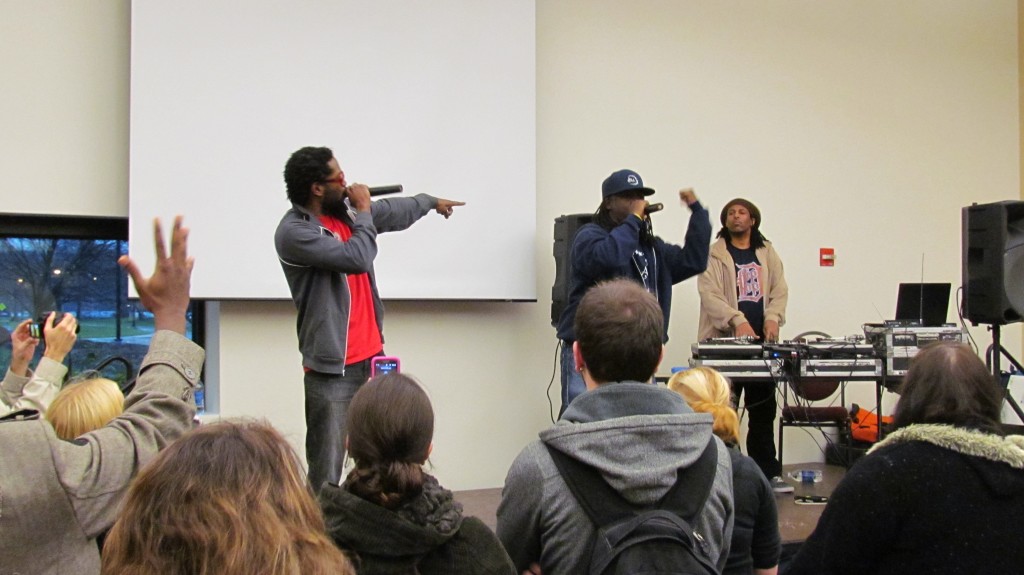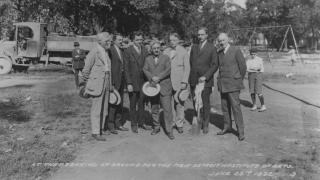
What do you get when you combine a DJ, MC, B-boying and graffiti?
Hip-Hop. Throw in some knowledge, and you have hip-hop in its purest form.
That’s according to a group of panelists who spoke about hip-hop culture Nov. 22 at UM-Dearborn’s University Center.
Members of 5 ELA, a popular hip-hop group from Detroit, discussed how the local artistic movement impacted music as a whole.
The forum, sponsored by the University’s Student Activities Board, American Studies Program, First-Year Seminar Program and African and African American Studies Program, also focused on how Detroit hip-hop has impacted the world.
The culture had a profound effect on Khalid el-Hakim, so much so that it prompted him to collect hundreds of hip-hop memorabilia items.
“Hip-hop allows you to be anything you want to be, as long as you can show improvement,” he said.
El-Hakim, founder of the Black History 101 Mobile Museum, spoke about the importance of collecting hip-hop culture, something he’s done over the past two decades. Among his collectibles showcased Nov. 22 at the UC were rare albums, photographs, magazines, concert flyers and posters, some of which included Detroit hip-hop icon Eminem.
DJ Sicari, a prominent staple in Detroit’s hip-hop community, said today’s music industry is flooded with the glorification of material possessions that often aren’t associated with hip-hop, like jewelry. One audience member coined much of today’s mainstream music as “garbage rap.”
Today’s music also sounds more commercial, as big business continues to play a key role in the lyrical messages being delivered through your speakers, DJ Sicari said.
“The people are tired,” he said. “They’re tired of your selling.”
But no matter the lyrics, hip-hop thrives on drums, said Mudd, a member of 5 ELA.
“Everything is energy and vibration,” he said. “Find the beats, and find those lyrics that match those beats.”
And while the crowd remained seated and attentive during the forum, all that changed once 5 ELA took the stage. They performed a few hip-hop tracks, as audience members rose to their feet and waved their hands in the air.
During their final track, 5 ELA again emphasized the five elements of hip-hop to support their argument that it’s not just music – it’s culture.






